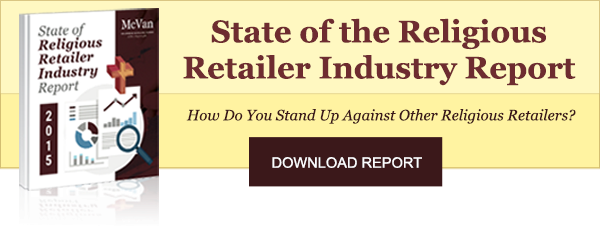
Jeweler Says It Isn't Real Sterling Silver: How Should you Respond?
It's every religious retailer's nightmare. A customer storms angrily into your store, accusing you of selling "phony" jewelry because his jeweler has determined that the item he or she just bought isn't genuine sterling silver after all. What should you do? Let's examine some strategies for placating the customer, preserving your brand's good name, and making sure you don't misrepresent similar religious silver jewelry going forward.
How did It Happen?
 Customers buy something other than what they thought they were getting for all sorts of reasons. Maybe they didn't bother to read the item description carefully. Maybe you failed to indicate whether the piece was sterling silver or electroplated. Or maybe the supplier promoted the piece as sterling silver when it actually wasn't.
Customers buy something other than what they thought they were getting for all sorts of reasons. Maybe they didn't bother to read the item description carefully. Maybe you failed to indicate whether the piece was sterling silver or electroplated. Or maybe the supplier promoted the piece as sterling silver when it actually wasn't.
Time to put on your detective hat and determine just what went wrong. Examine your product description carefully to see whether you need to use clearer language. Look at the items in the supplier catalog to see whether the supplier gives full disclosure about their composition. It's even possible that the customer bought the piece somewhere else, from a competing shop hawking the same product as real sterling silver!
Making It Right
 Regardless of what went wrong, one unhappy customer can turn multiple prospective buyers against you via poor word of mouth, so don't let that person leave your shop angry. Many aggrieved customers will be happy enough just to get their money back -- but try offering store credit instead, with the assurance that the sterling silver pieces in your inventory have been checked for authenticity. (We'll look at how you do that in a moment.) It's better to replace that bad taste with a good one than it is to simply scrub away the bad one.
Regardless of what went wrong, one unhappy customer can turn multiple prospective buyers against you via poor word of mouth, so don't let that person leave your shop angry. Many aggrieved customers will be happy enough just to get their money back -- but try offering store credit instead, with the assurance that the sterling silver pieces in your inventory have been checked for authenticity. (We'll look at how you do that in a moment.) It's better to replace that bad taste with a good one than it is to simply scrub away the bad one.
For every customer who actually walks into your store and lodges a complaint, there may be others out there who don't bother. Some of them may prefer to bad-mouth you on the Internet, so comb your social media channels for negative comments -- and respond positively to those comments by apologizing and offering to make amends. Use Google and popular review sites to scour the rest of the Web for other negative reviews and complaints.

so keep the word positive!
Buyer (and Shopkeeper) Beware
 If you honestly thought you had real sterling silver items in your inventory, how do you keep from getting duped in the future? First of all, learn how to order the right product. Sterling silver pieces will usually have a numerical grade of .925 or higher stamped on them; you may also see a lion hallmark or a "Sterling Silver" legend. If it says "EP" or "EPNS" on it, then it's just electroplated.
If you honestly thought you had real sterling silver items in your inventory, how do you keep from getting duped in the future? First of all, learn how to order the right product. Sterling silver pieces will usually have a numerical grade of .925 or higher stamped on them; you may also see a lion hallmark or a "Sterling Silver" legend. If it says "EP" or "EPNS" on it, then it's just electroplated.
If the piece comes with no markings at all (and you don't trust your supplier at this point), you can conduct some simple tests to see if you have real sterling silver. Applying a magnet to it won't confirm that it's real silver, but it will confirm that it isn't -- because silver isn't attracted to magnets. A piece that becomes very cold within seconds of being exposed to ice is probably silver, because silver is a highly efficient thermal conductor.
A more surefire method involves sacrificing one of the pieces in your shipment to science; a drop of nitric acid will turn real sterling silver cream-colored instead of green. Or you can have the piece tested via x-ray fluorescence, but you might pay more for the test than you'd lose by subjecting the piece to nitric acid.

Examine your sterling silver
products to determine their authenticity
By making customer satisfaction your top priority at all times, you can ensure that your religious retail store maintains a sterling reputation regarding its sterling silver items. As for recognizing the real McCoy in your supplier's catalog, bear in mind that the McVan product descriptions always note the difference between genuine metal and metal plating. View our collection and see for yourself!



